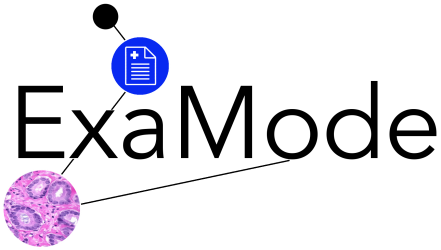2D Vector-Quantized Auto-Encoder for compression of Whole-Slide Images in Histopathology
See INSTALL.md.
We use PDM as python package manager (https://github.com/pdm-project/pdm).
set CAMELYON16_PATH and run train.py:
CAMELYON16_PATH=<camelyon-path> python train.pyset CAMELYON16_PATH, and append --multirun to automatically submit a sbatch job through submitit.
- If
CAMELYON16_PATHis a folder, the dataloader loads the dataset over the network. - If
CAMELYON16_PATHis a.tar, the file is copied to$SCRATCHof the allocated node, and the dataset is loaded locally.
CAMELYON16_PATH=<camelyon-path> python train.py --multirunChange node type by overwriting the node config, e.g.:
CAMELYON16_PATH=<camelyon-path> python train.py hydra/launcher/node@hydra.launcher=gpu_titanrtx --multirunNote on Mean Squared-Error results: input is channel-wise normalised to 0-mean, 1-std, using the following values, based on 10k patches:
| Red | Green | Blue | |
|---|---|---|---|
| Mean | 0.7279 | 0.5955 | 0.7762 |
| Standard Deviation | 0.2419 | 0.3083 | 0.1741 |
Top: original, bottom: reconstruction.
Input dimensionality: 256×256×3@0.5μm ordinal 8-bit, latent dimensionality: 32×32@16μm categorical 8-bit (i.e. 99.47% compression), 0.900 MSE.
Input dimensionality: 512×512×3@0.25μm ordinal 8-bit, latent dimensionality: 32×32@16μm categorical 8-bit (i.e. 99.87% compression), 0.800 MSE.
If this repository has helped you in your research we would value to be acknowledged in your publication.
This project has received funding from the European Union’s Horizon 2020 research and innovation programme under grant agreement No 825292. This project is better known as the ExaMode project. The objectives of the ExaMode project are:
- Weakly-supervised knowledge discovery for exascale medical data.
- Develop extreme scale analytic tools for heterogeneous exascale multimodal and multimedia data.
- Healthcare & industry decision-making adoption of extreme-scale analysis and prediction tools.
For more information on the ExaMode project, please visit www.examode.eu.






